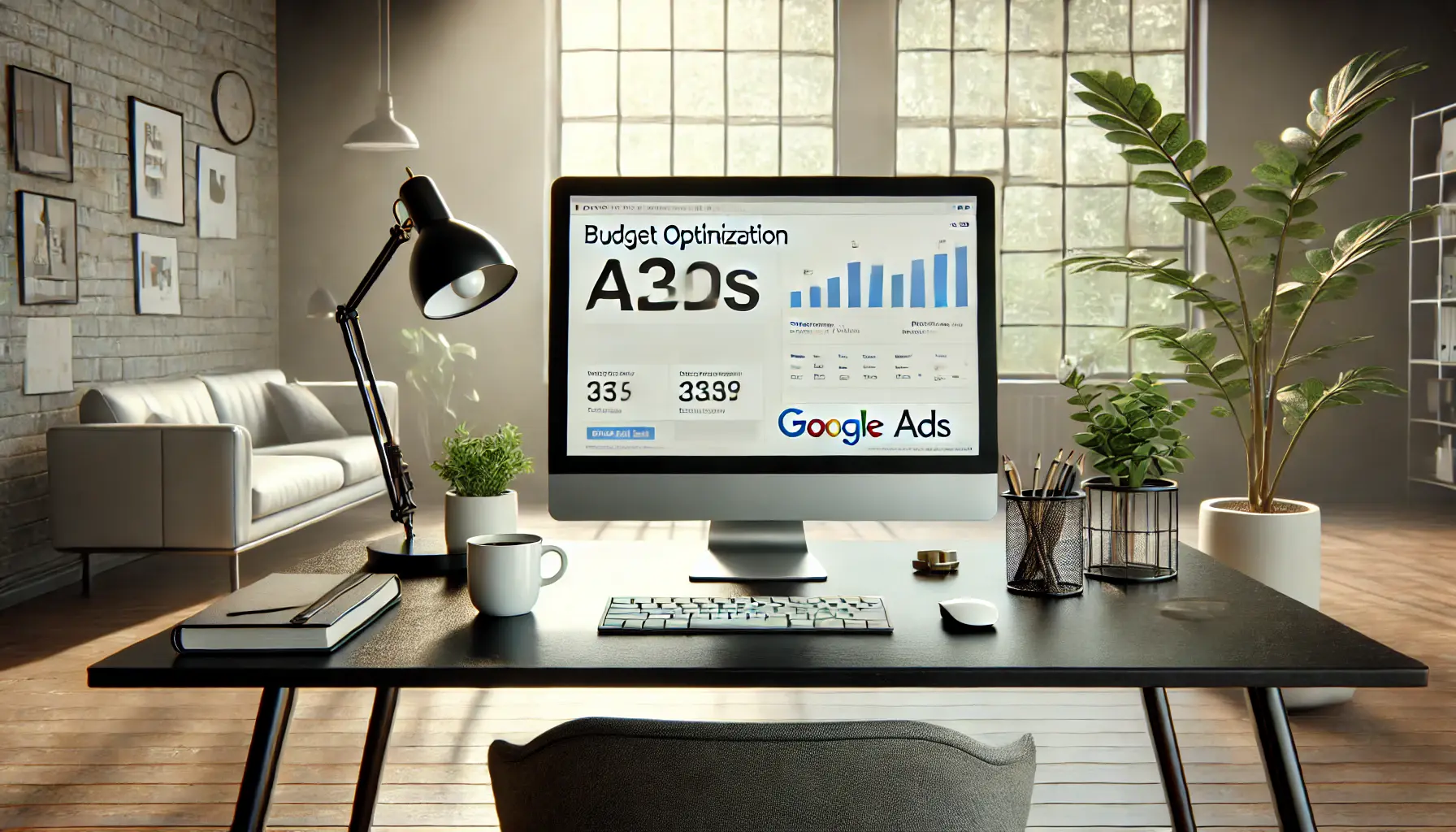Understanding the intricacies of budget allocation in Apple Search Ads is crucial for marketers and businesses aiming to maximize their return on investment.
This comprehensive guide delves into the strategies and best practices for optimizing budget allocation, ensuring that every dollar spent contributes significantly to campaign success.
Apple Search Ads, an essential platform for app promotion, offers unique opportunities for targeted advertising within the App Store.
However, the key to leveraging its full potential lies in the strategic allocation and optimization of your advertising budget.
This article will explore various facets of budget optimization, providing actionable insights for advertisers.
- Understanding the Basics of Apple Search Ads
- Strategies for Budget Optimization in Campaigns
- Advanced Targeting Techniques for Budget Efficiency
- Optimizing Ad Creatives for Higher Conversion
- Leveraging Automation and AI for Budget Management
- Measuring and Analyzing Campaign Performance
- Staying Ahead with Industry Trends and Best Practices
- Concluding Insights on Budget Allocation Optimization in Apple Search Ads
- Frequently Asked Questions About Budget Allocation in Apple Search Ads
Understanding the Basics of Apple Search Ads
Before diving into budget optimization, it’s important to grasp the fundamentals of Apple Search Ads.
This platform allows advertisers to place their apps at the top of App Store search results, increasing visibility and driving app downloads.
The effectiveness of these ads largely depends on how well the budget is managed and allocated across different campaigns and keywords.
Apple Search Ads operates on a cost-per-tap (CPT) model, where advertisers pay for each user tap on their ad.
The platform offers two types of campaigns: Basic and Advanced.
The Basic campaign is more straightforward, ideal for smaller businesses or those new to the platform.
In contrast, the Advanced campaign provides more control and customization, suitable for larger advertisers seeking detailed targeting and budgeting options.
Key Metrics for Budget Allocation
Several key metrics are crucial for effective budget allocation in Apple Search Ads.
These include tap-through rate (TTR), conversion rate (CVR), and cost-per-acquisition (CPA).
TTR measures how often people tap on your ad after seeing it, indicating the ad’s relevance and appeal.
CVR tracks how many of these taps result in an app download, reflecting the ad’s effectiveness in driving conversions.
CPA, on the other hand, represents the cost incurred for each app download, a critical metric for evaluating the financial efficiency of your ad spend.
By closely monitoring these metrics, advertisers can make informed decisions about where to allocate their budget.
For instance, if certain keywords or ad groups show a high CVR but a low TTR, it might be worth increasing the budget for these areas to boost visibility and capitalize on their conversion potential.
Optimizing budget allocation in Apple Search Ads involves a careful analysis of key performance metrics like TTR, CVR, and CPA, enabling advertisers to identify and invest in the most effective areas of their campaigns.
Strategies for Budget Optimization in Campaigns
Effective budget optimization in Apple Search Ads requires a strategic approach, balancing various elements to achieve the best possible outcomes.
Here, we outline several strategies that can significantly enhance the performance of your campaigns.
Allocating Budget Based on Campaign Type
Understanding the distinct characteristics of Basic and Advanced campaigns in Apple Search Ads is essential for budget allocation.
Basic campaigns, being more automated, might require a different budgeting approach compared to the highly customizable Advanced campaigns.
- Basic Campaigns: Ideal for smaller budgets or less experienced advertisers, these campaigns benefit from a more evenly distributed budget, focusing on broad reach and general keywords.
- Advanced Campaigns: Suitable for larger budgets and experienced marketers, these campaigns allow for more granular budget allocation, targeting specific keywords, demographics, and user behaviors.
Keyword-Level Budget Allocation
One of the most effective strategies in Apple Search Ads is allocating budget at the keyword level.
This involves analyzing the performance of individual keywords and adjusting the budget based on their effectiveness.
- High-Performing Keywords: Allocate a larger portion of the budget to keywords with high conversion rates and low CPAs, as they are more likely to drive efficient app downloads.
- Low-Performing Keywords: Reduce the budget or pause keywords that have high CPAs and low conversion rates, as they are less efficient in driving valuable user actions.
Seasonal and Time-Based Budget Adjustments
Adjusting your budget based on seasonal trends and specific time periods can also lead to more efficient spending.
For instance, increasing the budget during peak seasons or specific days of the week when user engagement is higher can yield better results.
- Peak Seasons: Allocate more budget during times when your target audience is more active, such as holidays or special events related to your app.
- Dayparting: Adjust your budget allocation based on the time of day or week, focusing on periods with higher user engagement and conversion rates.
Consider the unique characteristics of your app and audience when making seasonal and time-based budget adjustments, as these can significantly impact the effectiveness of your Apple Search Ads campaigns.
Advanced Targeting Techniques for Budget Efficiency
Advanced targeting in Apple Search Ads allows advertisers to refine their audience, ensuring that the budget is spent on users most likely to convert.
Implementing these techniques can significantly improve budget efficiency and campaign performance.
Demographic and Geographic Targeting
Targeting specific demographics and geographic locations can help focus your budget on the most relevant audience segments.
This approach ensures that your ads are seen by users who are more likely to be interested in your app.
- Demographic Targeting: Tailor your campaigns to target specific age groups, genders, or other demographic factors that align with your app’s target audience.
- Geographic Targeting: Focus your ad spend on specific regions, countries, or cities where your app has the highest potential for user engagement and conversion.
Behavioral and Interest-Based Targeting
Behavioral and interest-based targeting involves reaching users based on their past actions, interests, and app usage patterns.
This method allows for more personalized and relevant ad experiences, leading to higher engagement rates.
- Behavioral Targeting: Target users based on their previous interactions with your app or similar apps, such as past downloads or in-app activities.
- Interest-Based Targeting: Reach users who have shown interest in specific topics or categories related to your app, enhancing the likelihood of engagement and conversion.
Utilizing Lookalike Audiences
Lookalike audiences are groups of users who share characteristics with your existing customers.
By targeting these audiences, you can extend your reach to new users who are likely to be interested in your app.
- Creating Lookalike Audiences: Use data from your existing user base to identify and target new users with similar behaviors and interests.
- Adjusting Budget for Lookalike Audiences: Allocate a portion of your budget to test and optimize campaigns targeting lookalike audiences, evaluating their performance over time.
Effective use of advanced targeting techniques in Apple Search Ads, such as demographic, geographic, behavioral, and lookalike audience targeting, can lead to more efficient budget utilization and improved campaign outcomes.
Optimizing Ad Creatives for Higher Conversion
Ad creatives play a pivotal role in the success of Apple Search Ads campaigns.
Optimizing these creatives is essential for capturing user attention and driving higher conversion rates, which in turn, leads to more efficient budget allocation.
Designing Engaging Ad Visuals
The visual appeal of your ad can significantly impact user engagement.
High-quality, relevant images and videos that resonate with your target audience can increase the effectiveness of your ads.
- App Screenshots: Use clear, visually appealing screenshots that highlight the most compelling features of your app.
- Videos: Incorporate short, engaging videos that showcase your app’s functionality and user experience.
Crafting Compelling Ad Copy
Alongside visuals, the text in your ad creatives is crucial for conveying your app’s value proposition.
Effective ad copy should be concise, clear, and persuasive, encouraging users to download your app.
- Headlines: Create attention-grabbing headlines that succinctly communicate the core benefits of your app.
- Descriptions: Provide brief, informative descriptions that highlight key features and what sets your app apart from competitors.
Personalizing Ad Creatives
Personalization can significantly enhance the relevance and appeal of your ads.
Tailoring creatives to specific audience segments ensures that your ads resonate more effectively with different user groups.
- User Segmentation: Develop different ad creatives for various segments of your audience based on their interests, behaviors, and demographics.
- A/B Testing: Regularly test different versions of your ad creatives to determine which elements resonate best with your target audience.
Optimizing ad creatives in Apple Search Ads, through engaging visuals, compelling copy, and personalization, is key to improving ad performance, leading to higher conversion rates and more efficient budget utilization.
Leveraging Automation and AI for Budget Management
In the ever-evolving landscape of digital advertising, automation and artificial intelligence (AI) have become indispensable tools for optimizing budget allocation in Apple Search Ads.
These technologies offer precision and efficiency, enabling advertisers to maximize the impact of their ad spend.
Automated Bidding Strategies
Automated bidding leverages AI algorithms to adjust bids in real-time, based on the likelihood of achieving the desired outcome.
This approach ensures optimal bid amounts for each ad placement, enhancing the chances of campaign success.
- Cost-Per-Acquisition (CPA) Bidding: Focuses on acquiring users at a specific cost, ideal for campaigns with a clear cost-per-download goal.
- Return on Ad Spend (ROAS) Bidding: Aims to achieve a specific return on ad spend, suitable for campaigns where revenue generation is a priority.
AI-Powered Budget Optimization
AI-driven tools can analyze vast amounts of data to provide insights on budget allocation.
These tools can predict campaign performance, suggest budget adjustments, and identify new opportunities for ad placements.
- Performance Forecasting: Uses historical data to forecast campaign performance and recommend budget adjustments.
- Opportunity Identification: AI algorithms can identify untapped opportunities, such as emerging keywords or audience segments, for budget reallocation.
Continuous Campaign Monitoring and Adjustment
Automation tools also enable continuous monitoring of campaign performance.
This allows for timely adjustments in budget allocation, ensuring that campaigns remain efficient and effective over time.
- Real-Time Analytics: Provides up-to-date insights on campaign performance, allowing for quick decision-making and adjustments.
- Dynamic Budget Re-allocation: Automatically shifts budget to high-performing campaigns or ad groups, maximizing the overall efficiency of ad spend.
Embracing automation and AI in Apple Search Ads not only streamlines budget management but also enhances the precision and effectiveness of campaigns, leading to better ROI and reduced manual effort.
Measuring and Analyzing Campaign Performance
Accurate measurement and analysis of campaign performance are critical for optimizing budget allocation in Apple Search Ads.
By understanding which aspects of your campaigns are driving success, you can make more informed decisions about where to allocate your budget for maximum impact.
Key Performance Indicators (KPIs)
Identifying and tracking the right KPIs is essential for evaluating the effectiveness of your campaigns.
These metrics provide insights into how well your ads are performing in terms of user engagement and conversion.
- Conversion Rate (CVR): Measures the percentage of users who download your app after clicking on the ad.
- Cost Per Acquisition (CPA): Indicates the average cost incurred for each app download.
- Return on Ad Spend (ROAS): Calculates the revenue generated for every dollar spent on advertising.
Utilizing Analytics Tools
Analytics tools play a vital role in gathering and interpreting data from your Apple Search Ads campaigns.
These tools can provide detailed insights into user behavior, ad performance, and overall campaign effectiveness.
- Data Visualization: Presents complex data in an easily understandable format, helping you to quickly identify trends and patterns.
- User Behavior Analysis: Offers insights into how users interact with your ads, including which elements are most engaging and lead to conversions.
Regular Reporting and Review
Regularly reviewing campaign performance reports is crucial for ongoing optimization.
These reports can highlight areas for improvement and help you adjust your strategy to better align with your marketing objectives.
- Performance Trends: Analyze trends over time to understand the long-term effectiveness of your campaigns.
- Budget Utilization: Review how your budget is being spent across different campaigns and keywords, and adjust allocation based on performance.
Effective measurement and analysis, through the use of KPIs and analytics tools, are fundamental for optimizing budget allocation in Apple Search Ads, enabling advertisers to refine their strategies for enhanced campaign performance.
Staying Ahead with Industry Trends and Best Practices
Keeping abreast of the latest industry trends and best practices is crucial for maintaining the effectiveness of your Apple Search Ads campaigns.
The digital advertising landscape is constantly evolving, and staying informed can provide a competitive edge in budget optimization strategies.
Adapting to Market Changes
Market trends can significantly influence user behavior and advertising effectiveness.
Adapting your budget allocation strategies in response to these changes ensures that your campaigns remain relevant and effective.
- Emerging Technologies: Stay updated on new tools and technologies that can enhance ad targeting and budget optimization.
- Changing User Preferences: Monitor shifts in user behavior and preferences to adjust your ad strategies accordingly.
Incorporating Industry Best Practices
Adopting industry best practices is essential for maximizing the ROI of your Apple Search Ads campaigns.
These practices are based on proven strategies and insights from successful advertisers.
- Continuous Learning: Regularly seek out new information and case studies to learn from the successes and challenges of other advertisers.
- Networking and Collaboration: Engage with industry peers and experts to share knowledge and stay informed about the latest trends and techniques.
Experimentation and Innovation
Experimentation is key to discovering what works best for your specific campaigns.
Innovating with new approaches and testing different strategies can lead to breakthroughs in budget efficiency and campaign performance.
- A/B Testing: Test different ad creatives, targeting options, and budget allocations to identify the most effective combinations.
- Innovative Campaign Strategies: Don’t be afraid to try unconventional approaches or explore new market segments for potential opportunities.
Staying ahead in the dynamic field of Apple Search Ads requires a proactive approach to market trends, industry best practices, and continuous experimentation, ensuring that your budget allocation strategies are always aligned with the latest insights and innovations.
Concluding Insights on Budget Allocation Optimization in Apple Search Ads
In the realm of digital advertising, particularly within Apple Search Ads, the art of budget allocation optimization stands as a cornerstone for achieving marketing success.
The journey through various strategies and best practices reveals a landscape where precision, adaptability, and informed decision-making converge to drive effective campaign outcomes.
Key Takeaways for Effective Budget Management
Our exploration underscores the importance of understanding the nuances of Apple Search Ads, from mastering the basics to leveraging advanced targeting techniques.
The role of ad creatives and the impact of automation and AI in budget management have emerged as pivotal elements in this dynamic environment.
- Strategic allocation based on campaign type and keyword performance is fundamental.
- Advanced targeting, including demographic, geographic, and behavioral aspects, enhances budget efficiency.
- Optimized ad creatives and AI-driven automation are instrumental in maximizing ROI.
Embracing Continuous Learning and Adaptation
As the digital advertising landscape evolves, so must our strategies for budget allocation in Apple Search Ads.
Staying informed about industry trends, embracing best practices, and continually experimenting with new approaches are essential for staying ahead in this competitive field.
- Adaptation to market changes and user preferences is key to maintaining campaign relevance.
- Incorporating industry best practices and learning from peers can lead to improved strategies.
- Experimentation and innovation open doors to new opportunities and enhanced campaign performance.
In conclusion, the journey to optimize budget allocation in Apple Search Ads is one of ongoing learning, strategic planning, and agile adaptation.
By embracing these principles, advertisers can not only achieve their immediate campaign goals but also lay a foundation for sustained success in the ever-changing world of app advertising.
If you're seeking expertise in Apple Search Ads campaigns, visit our service page for professional management!
Frequently Asked Questions About Budget Allocation in Apple Search Ads
Delve into the most common inquiries surrounding the optimization of budget allocation in Apple Search Ads, providing clarity and strategic insights.
Set a daily budget based on your overall campaign goals, considering factors like target audience, expected conversion rates, and competitive bidding environment.
Focus on high-performing keywords, adjust bids based on conversion rates, and regularly review keyword performance to optimize your bidding strategy.
Yes, you can adjust your budget allocation based on campaign performance, market trends, and changing business objectives to optimize ad spend.
Automated bidding uses AI algorithms to adjust bids in real-time, enhancing budget efficiency by targeting users most likely to convert.
Audience targeting helps focus your budget on the most relevant users, increasing the likelihood of conversions and improving ROI.
Measure success by tracking key metrics like conversion rate, cost per acquisition, and return on ad spend to evaluate the effectiveness of your budget allocation.
Optimizing ad creatives enhances user engagement and conversion rates, leading to more efficient use of your advertising budget.
Yes, seasonal trends can impact user behavior, making it important to adjust your budget allocation to capitalize on these changes for better campaign performance.










